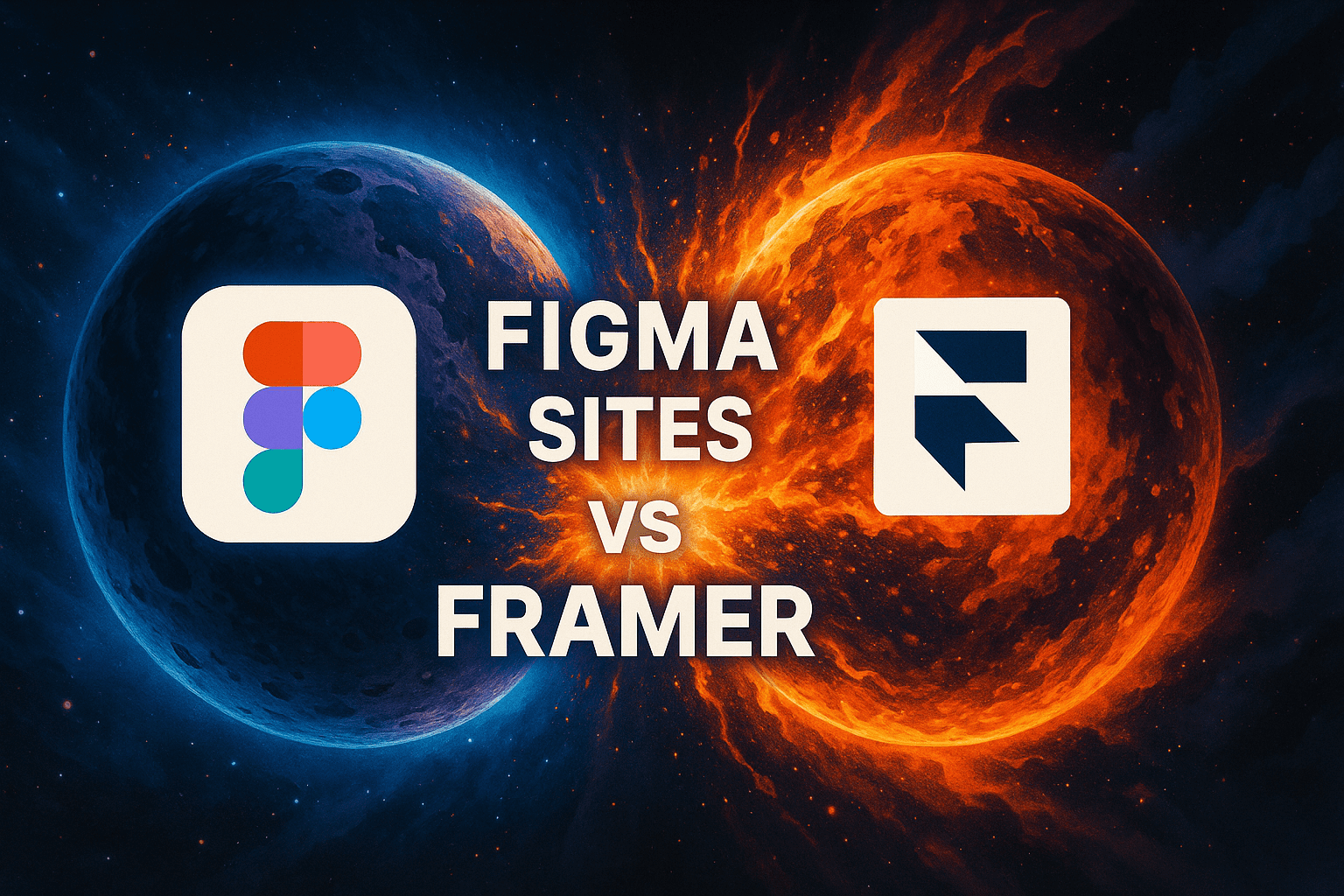Figma Sites came to replace Framer and this is what we needed
For the past two years, Framer has built its reputation on one thing: doing what Figma didn’t. It let designers ship websites—visually, quickly, without code—while keeping the UI and logic familiar to anyone fluent in Figma. That strategy paid off. Framer became the go-to for freelancers and solo designers who wanted to stop handing off files and start delivering fully functional websites. Design it, publish it, get paid. Simple.
But now, Figma is coming for that exact use case—with Figma Sites.

Framer’s rise: the solo designer’s developer
Framer’s genius was its positioning. It wasn’t just a no-code site builder. It mimicked the Figma interface: auto layout, components, responsive constraints, everything. The learning curve was minimal for anyone already designing in Figma. You didn’t need to wait on a dev or pay one. You could offer your clients the full package—from design to live site—yourself. That opened up new income streams and more control for designers.
Sure, no-code site builders weren’t new. WordPress themes like Divi or Elementor did this years ago. But those tools were bloated, clunky, and outdated in their design logic. Webflow brought modern CSS structure and responsiveness but was always more developer-centric, better suited for agencies than freelancers.
Framer filled that middle ground perfectly—modern, minimal, visual. But still, you needed to design in Figma first, then push it to Framer.
The workflow bottleneck
And that’s where the cracks started to show. Most designers never designed directly in Framer. They built in Figma, then used plugins like Figma-to-Framer to port the work over. Once the site was live and edits happened in Framer, the Figma file became obsolete. Version control broke. Updating the site meant either redoing work in both tools or accepting that the source file and live version would diverge over time.
It was efficient—until it wasn’t.

Figma Sites: closing the loop
Figma Sites removes that bottleneck entirely. For the first time, designers can publish a live website directly from their design file. No exports. No plugin bridge. No duplicated efforts. That’s the feature everyone’s talking about the least—but it’s the most powerful one. Because it means you no longer need two tools to go from design to web. Just one.
It also sends a clear message: Figma wants a piece of the no-code pie. And not just through AI-powered design assistance—they want to own the whole flow.
Framer’s challenge ahead
Right now, Figma Sites is in beta. It’s not as polished as Framer yet in terms of customization, interactions, or CMS capabilities. Designers who built their brand around Framer won’t switch overnight. Many of them have entire client processes and service offerings centered on it.
But the threat is real. Because for new designers entering the space, the value of learning just one tool—Figma—and being able to both design and publish with it is hard to ignore. These are the users that Framer has been onboarding steadily for the past 24 months. That growth may start to slow.

The long game: Figma will win—eventually
Figma is still the design standard. Every designer uses it. Framer, as good as it is, is still seen as a complementary tool. A necessary extra step. The moment Figma reaches feature parity with Framer—maybe in a year or two—the incentive to switch becomes overwhelming.
That doesn’t mean Framer dies. It just becomes the Webflow of this generation—better suited for those who need more control, more structure, more advanced capabilities. But the mass of designers who just want to launch clean, fast, good-looking websites? They’ll stay in Figma.
The no-code war is heating up. And this time, Figma isn’t sitting out.
Share article on



